Air Scrubbers vs. Air Purifiers: Understanding the Differences and Benefits
Air Scrubbers vs. Air Purifiers: Understanding the Differences and Benefits
By: Brothers Equipment And Supply
Introduction: Indoor air quality plays a crucial role in maintaining a healthy living environment. Two popular devices used to improve air quality are air scrubbers and air purifiers.
In this article, we will explore the main differences between air scrubbers and air purifiers, their benefits, and applications, and provide answers to frequently asked questions (FAQs) about these devices.
Understanding Air Scrubbers

A. Definition and Function: Air scrubbers are portable filtration systems that capture and remove airborne particles, contaminants, and odors from the air. They use a combination of filters and powerful fans to circulate and clean the air in enclosed spaces.
B. Key Features and Technologies: Air scrubbers often feature HEPA filters, carbon filters, and UV lights to effectively trap and eliminate pollutants. Some models may also include additional features like ionizers for further air purification.
C. Benefits of Air Scrubbers: Air scrubbers offer several benefits, including:
- Removing allergens and irritants from the air, improving indoor air quality.
- Eliminating unpleasant odors caused by smoke, cooking, or pets.
- Reducing the risk of respiratory issues by capturing airborne bacteria and viruses.
D. Applications: Air scrubbers are commonly used in various settings, including:
- Construction and renovation sites to control dust and debris.
- Mold remediation projects to remove mold spores from the air.
- Indoor spaces affected by smoke or water damage to restore air quality.
E. FAQs and Answers about Air Scrubbers:
- “Do air scrubbers produce ozone?”
- No, air scrubbers do not produce ozone. They work by removing particles and contaminants without releasing any harmful substances.
- “Can air scrubbers eliminate mold?”
- Air scrubbers can help remove mold spores from the air, but additional remediation steps are necessary to address the underlying mold issue.
- “How often should air scrubber filters be replaced?”
- The frequency of filter replacement depends on usage and environmental conditions. Generally, it is recommended to replace filters every 3-6 months or as indicated by the manufacturer.
Understanding Air Purifiers
A. Definition and Function: Air purifiers are devices designed to remove contaminants and pollutants from the air. They use various technologies to capture and filter particles, improving the overall air quality in a room or space.
B. Key Features and Technologies: Air purifiers commonly utilize HEPA filters, activated carbon filters, and electrostatic precipitators to trap and eliminate airborne pollutants such as dust, pollen, pet dander, and volatile organic compounds (VOCs).
C. Benefits of Air Purifiers: Air purifiers offer several benefits, including:
- Allergen reduction by capturing airborne particles that can trigger allergies.
- Improved respiratory health by removing pollutants and irritants from the air.
- Odor elimination, creating a fresh and clean indoor environment.
D. Applications: Air purifiers are widely used in various settings, including:
- Homes and apartments to improve indoor air quality and create a healthier living environment.
- Offices and workplaces to enhance productivity and employee well-being.
- Medical facilities to provide clean and sterile air for patients and staff.
E. FAQs and Answers about Air Purifiers:
- “Do air purifiers help with cigarette smoke?”
- Yes, air purifiers with activated carbon filters are effective in removing cigarette smoke particles and reducing associated odors.
- “How much electricity does an air purifier consume?”
- The power consumption of air purifiers varies depending on the model and fan speed settings. Most units have energy-efficient designs and consume minimal electricity.
- “Can air purifiers eliminate pet allergens?”
- Yes, air purifiers with HEPA filters can capture pet dander and allergens, helping to reduce allergic reactions.
Comparing Air Scrubbers and Air Purifiers
A. Main Differences:
Air scrubbers are primarily used for controlling airborne particles, odors, and contaminants in specific environments like construction sites or mold remediation projects.
Air purifiers focus on overall air quality improvement in various indoor settings such as homes, offices, and medical facilities.
B. Choosing the Right Solution:
When selecting between air scrubbers and air purifiers, consider the specific needs and requirements of the environment. Consult with professionals to determine the most suitable option for your situation.
C. Combined Use:
In some cases, using both air scrubbers and air purifiers in conjunction can provide comprehensive air cleaning and purification, especially in situations with severe contamination or specific air quality concerns.
Conclusion
Air scrubbers and air purifiers are valuable tools for enhancing indoor air quality. Understanding their differences, benefits, and applications can help you make informed decisions when it comes to improving the air you breathe. Whether you need to control specific contaminants or improve overall air quality, these devices offer effective solutions to create a healthier and more comfortable living or working environment.
If you have any questions about are article “Air Scrubbers vs. Air Purifiers: Understanding the Differences and Benefits” or want to buy a new air scrubber, feel free to contact us on social media, LiveChat or at sales@brothers-equipment.com.
